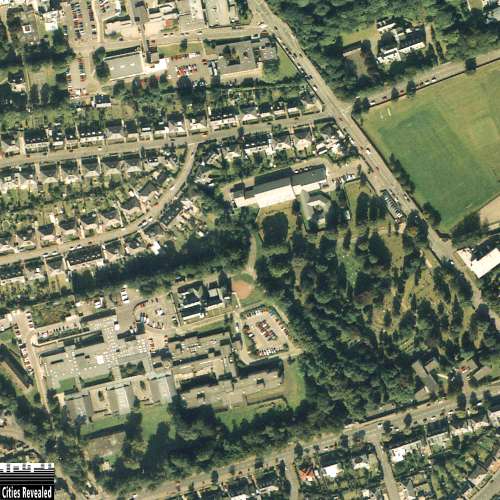Craigleith Hill Estate
Aerial photo of Craigleith Hill area taken c.1996 (provided by resident Nick Timmins). Can you find your home?


Click on the photo above for a larger view
The colour aerial photograph above shows the Craigleith Hill Area squashed in between
the "The Quarry" (Craigleith Retail Park)on the left,The Royal Victoria Hospital
centre bottom,Comely Bank Cemetery bottom right and the Western General Hospital at top centre.
The residential part of Craigleith Hill started with the building of Barnton Terrace and
West Barnton Terrace - now renamed to form the North side of Craigleith Road.
The lane to the back of Barnton Terrace has the Barnton Terrace Lane name plate on it.
Millers then started to build the Craigleith Hill residential part in the early 1930s
beginning with the Crescent and Loan off Craigleith Road and the Avenue and Gardens from
the Crewe Road South end.
The major part of the area seemed to be finished around mid 1930s.
This timeline shows how the estate developed over time.
A house at the top of the Gardens was sold to a resident on 29th November 1932.
The last houses built in the area were as late as 1990s when the waste ground between the Crescent and Park was built on.
An interesting comment regarding the houses is given below from the book
EDINBURGH by David Keir 1966,Greenbank and other areas, which are now the minor suburbs, heralded
the main body of suburban little house:
'A typical design was the semi detached bungalow: hipped roofs; brick construction with pebble dash facing; two bedrooms, living room, kitchen and bathroom.
The rooms were smaller than those of the midde-class tenement flats of the pre-1914, the term kitchenette being used to give some countenance to the compartment in which the sink, cooker, larder and housewife were kept. The most important feature, however, which redeemed every defect of size, construction and design, was the plot of land which went with each house.'